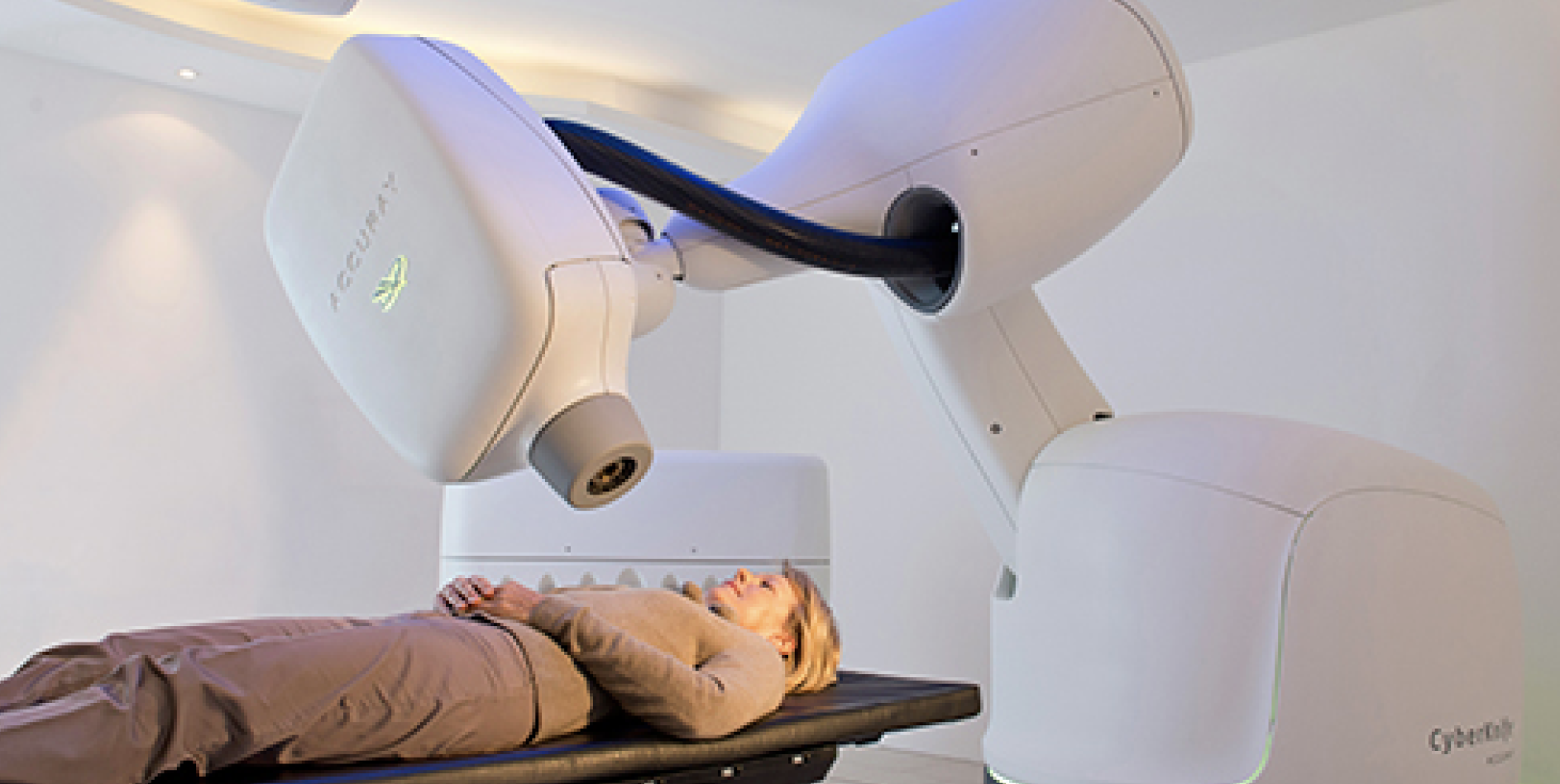1 dose of CyberKnife (SBRT) is more effective at controlling & eliminating pain from metastatic bone cancer than 10 conventional multi fraction radiotherapy sessions (MFRT) according to a new study published in the Journal of the American Medical Association (JAMA).
In this prospective randomized phase 2 trial, 160 patients with mostly non-spine bone lesions were randomly assigned to receive single-fraction SBRT (12 Gy for ≥4-cm lesions or 16 Gy for 4-cm lesions) or MFRT to 30 Gy in 10 fractions.
Single-fraction radiation led to more patients experiencing complete or partial pain response at 2 weeks, 3 months, and 9 months compared with standard MFRT.
Pain response rates were higher for high-dose, single-fraction SBRT, which should be considered for patients with bone metastases and long estimated survival times.
Click here to read the full study results & conclusions:
Single-Fraction Stereotactic vs Conventional Multifraction Radiotherapy for Pain Relief in Patients With Predominantly Nonspine Bone Metastases
A Randomized Phase 2 Trial
Quynh-Nhu Nguyen, MD1; Stephen G. Chun, MD1; Edward Chow, MBBS, PhD3; et al
Ritsuko Komaki, MD1; Zhongxing Liao, MD1; Rensi Zacharia, MD1; Bill K. Szeto, BA1; James W. Welsh, MD1; Stephen M. Hahn, MD1; C. David Fuller, MD1; Bryan S. Moon, MD2; Justin E. Bird, MD2; Robert Satcher, MD2; Patrick P. Lin, MD2; Melenda Jeter, MD1; Michael S. O’Reilly, MD1; Valerae O. Lewis, MD2
Author Affiliations
JAMA Oncol. Published online April 25, 2019. doi:10.1001/jamaoncol.2019.0192
Key Points
Question Does single-fraction stereotactic body radiotherapy (SBRT) for bone metastases lead to better pain response rates than standard multifraction radiotherapy (MFRT)?
Findings In this prospective randomized phase 2 noninferiority trial, 160 patients with mostly nonspine bone lesions were randomly assigned to receive single-fraction SBRT (12 Gy for ≥4-cm lesions or 16 Gy for <4-cm lesions) or MFRT to 30 Gy in 10 fractions. Single-fraction radiation led to more patients experiencing complete or partial pain response at 2 weeks, 3 months, and 9 months compared with standard MFRT.
Meaning Pain response rates were higher for high-dose, single-fraction SBRT, which should be considered for patients with bone metastases and long estimated survival times.
Abstract
Importance Consensus is lacking as to the optimal radiotherapy dose and fractionation schedule for treating bone metastases.
Objective To assess the relative efficacy of high-dose, single-fraction stereotactic body radiotherapy (SBRT) vs standard multifraction radiotherapy (MFRT) for alleviation of pain in patients with mostly nonspine bone metastases.
Design, Setting, and Participants This prospective, randomized, single-institution phase 2 noninferiority trial conducted at a tertiary cancer care center enrolled 160 patients with radiologically confirmed painful bone metastases from September 19, 2014, through June 19, 2018. Patients were randomly assigned in a 1:1 ratio to receive either single-fraction SBRT (12 Gy for ≥4-cm lesions or 16 Gy for <4-cm lesions) or MFRT to 30 Gy in 10 fractions.
Main Outcomes and Measures The primary end point was pain response, defined by international consensus criteria as a combination of pain score and analgesic use (daily morphine-equivalent dose). Pain failure (ie, lack of response) was defined as worsening pain score (≥2 points on a 0-to-10 scale), an increase in morphine-equivalent opioid dose of 50% or more, reirradiation, or pathologic fracture. We hypothesized that SBRT was noninferior to MFRT.
Results In this phase 2 noninferiority trial of 96 men and 64 women (mean [SD] age, 62.4 [10.4] years), 81 patients received SBRT and 79 received MFRT. Among evaluable patients who received treatment per protocol, the single-fraction group had more pain responders than the MFRT group (complete response + partial response) at 2 weeks (34 of 55 [62%] vs 19 of 52 [36%]) (P = .01), 3 months (31 of 43 [72%] vs 17 of 35 [49%]) (P = .03), and 9 months (17 of 22 [77%] vs 12 of 26 [46%]) (P = .03). No differences were found in treatment-related toxic effects or quality-of-life scores after SBRT vs MFRT; local control rates at 1 and 2 years were higher in patients receiving single-fraction SBRT.
Conclusions and Relevance Delivering high-dose, single-fraction SBRT seems to be an effective treatment option for patients with painful bone metastases. Among evaluable patients, SBRT had higher rates of pain response (complete response + partial response) than did MFRT and thus should be considered for patients expected to have relatively long survival.
Trial Registration ClinicalTrials.gov identifier: NCT02163226

